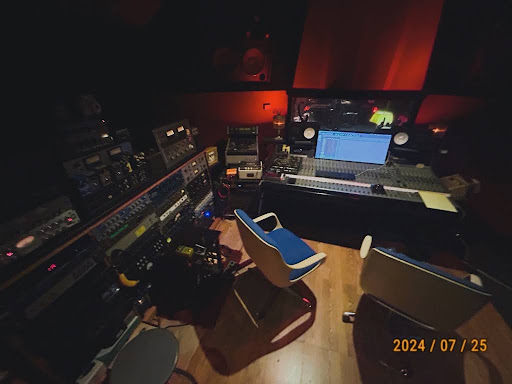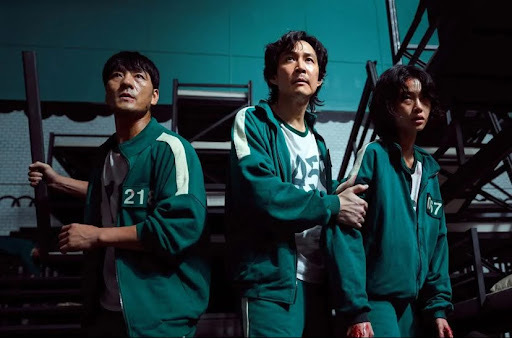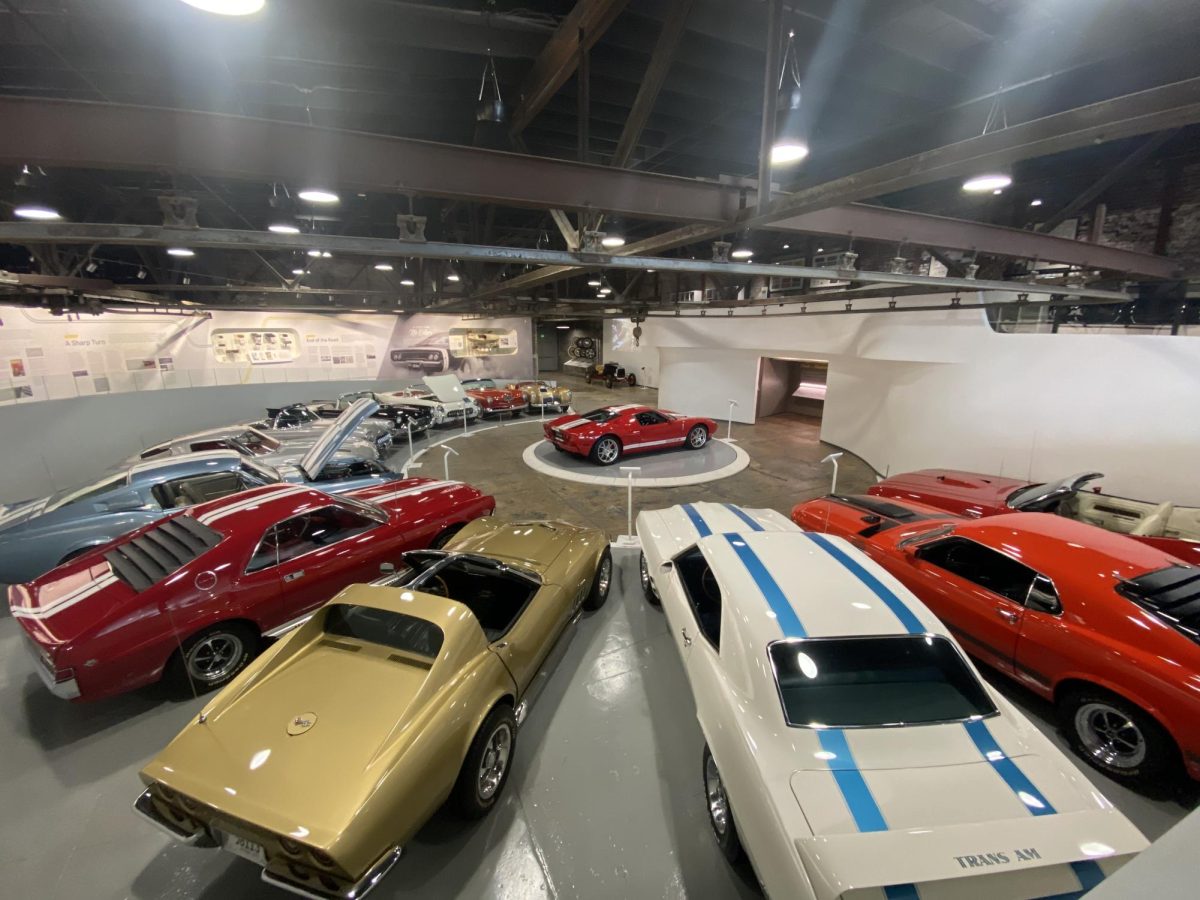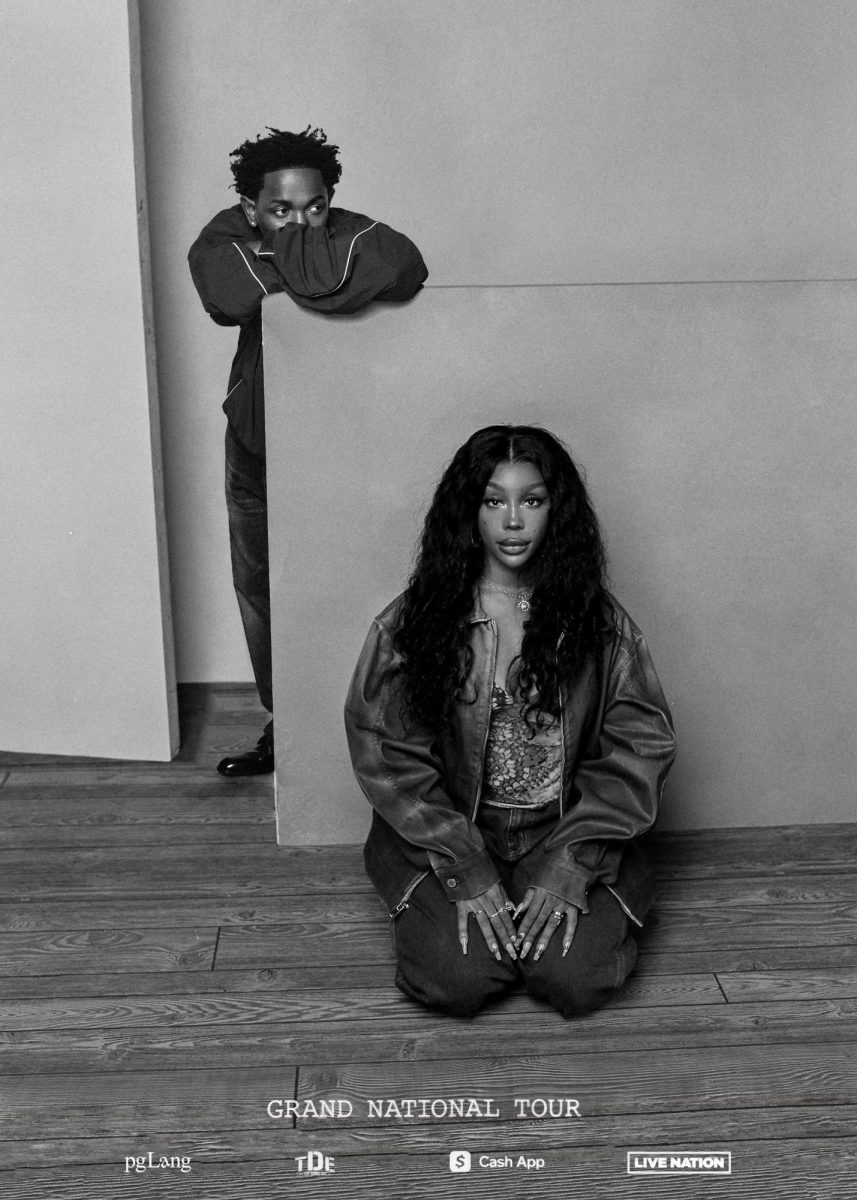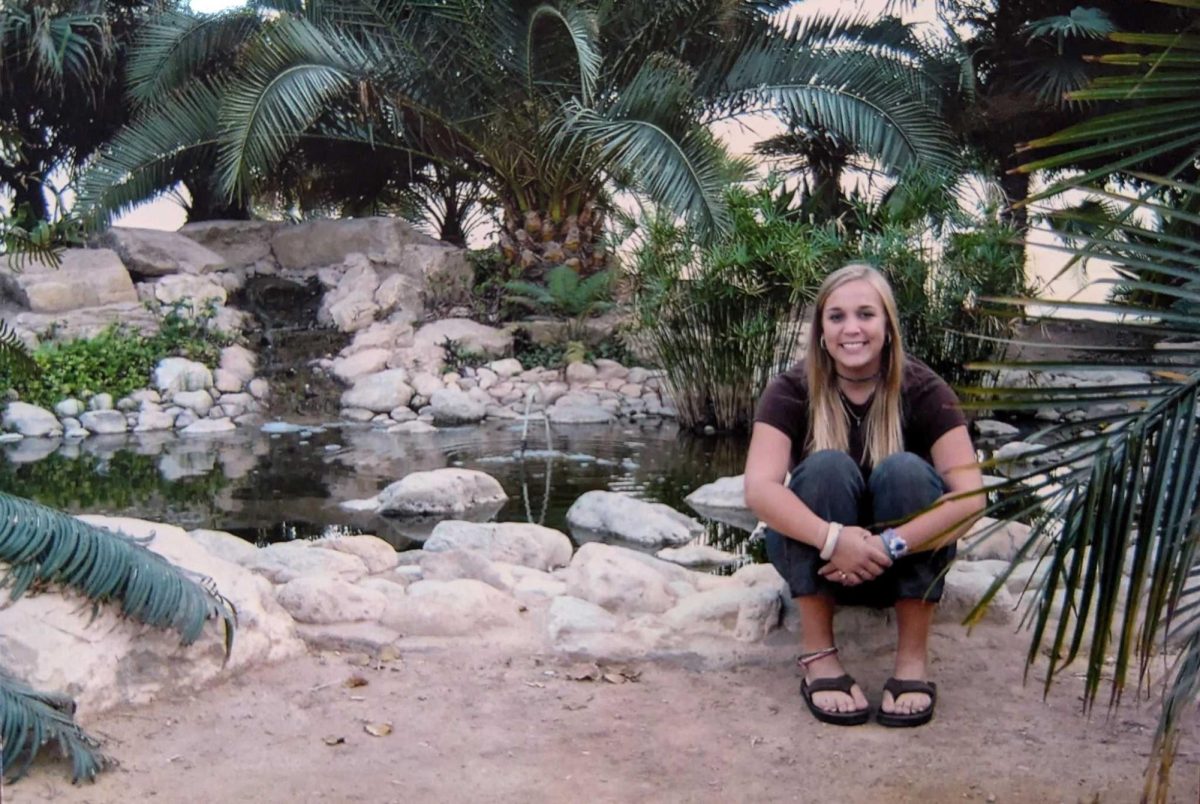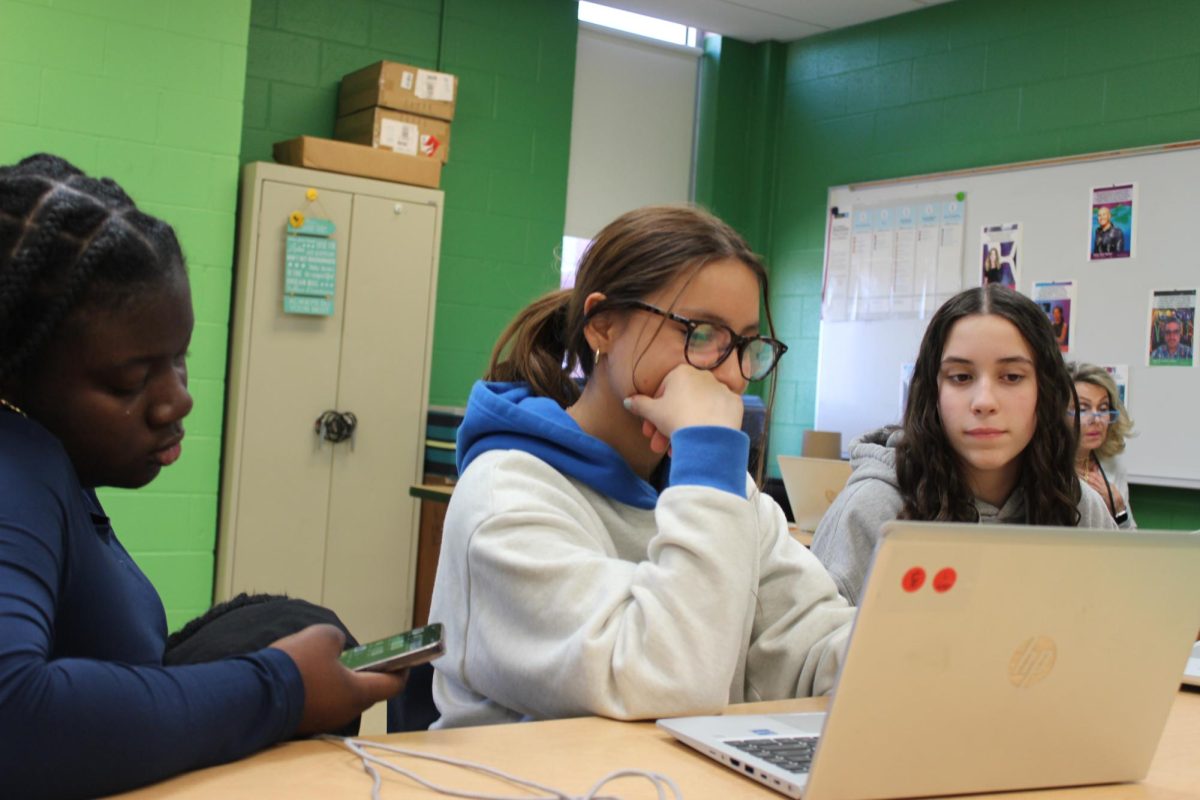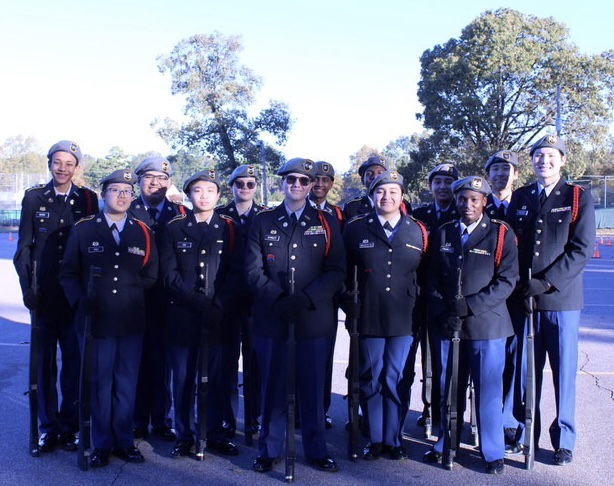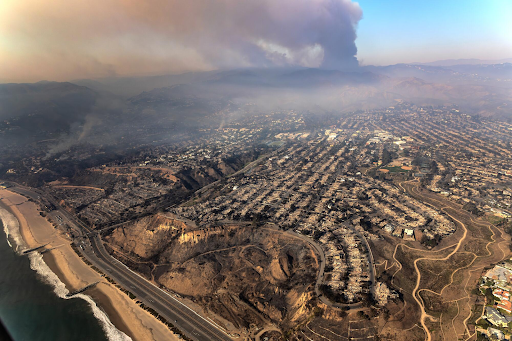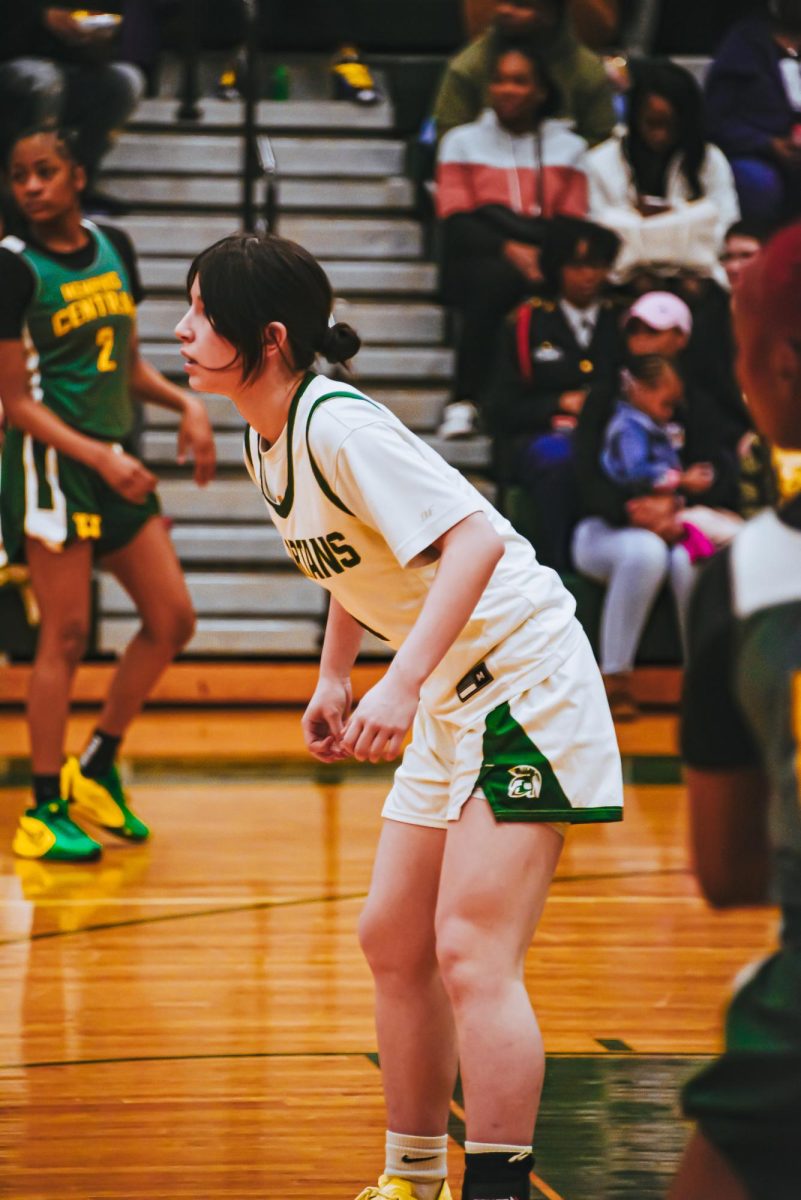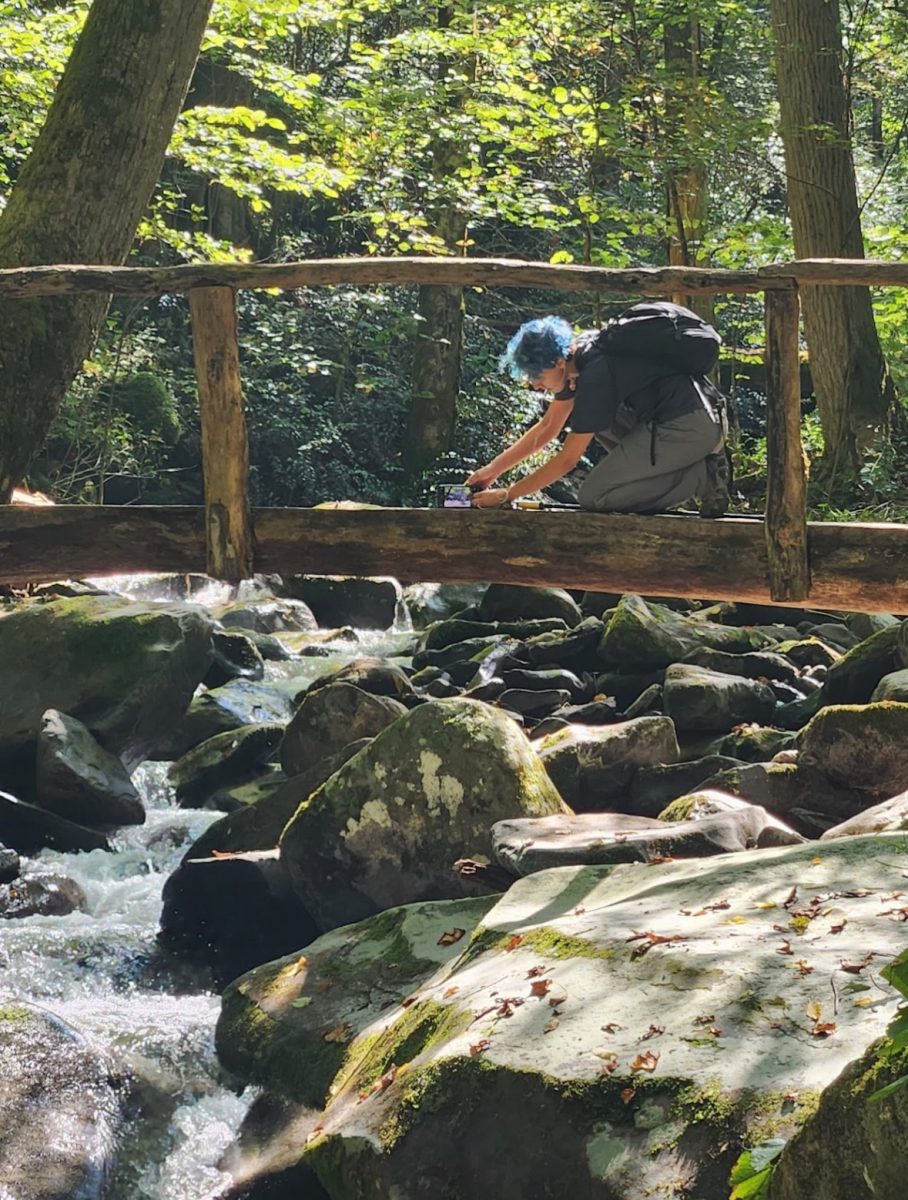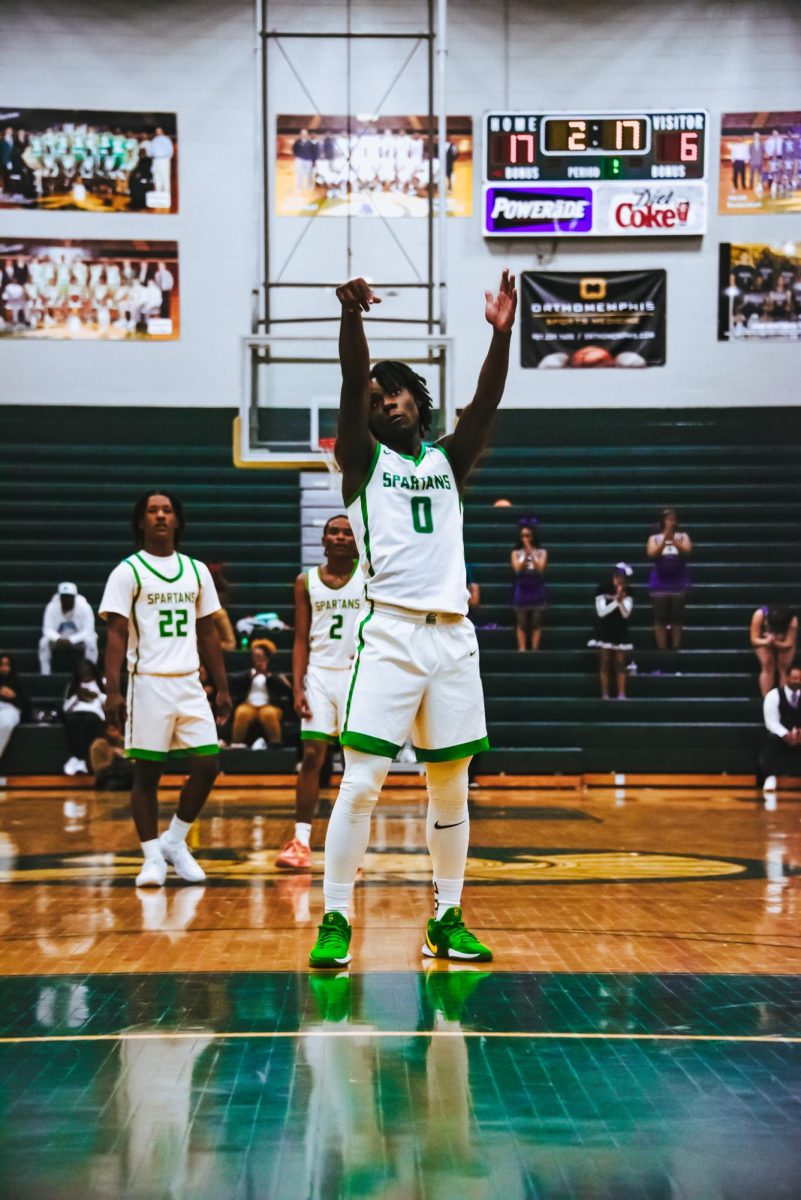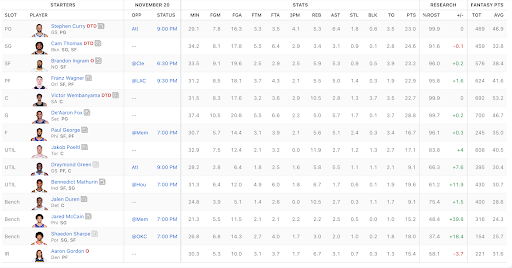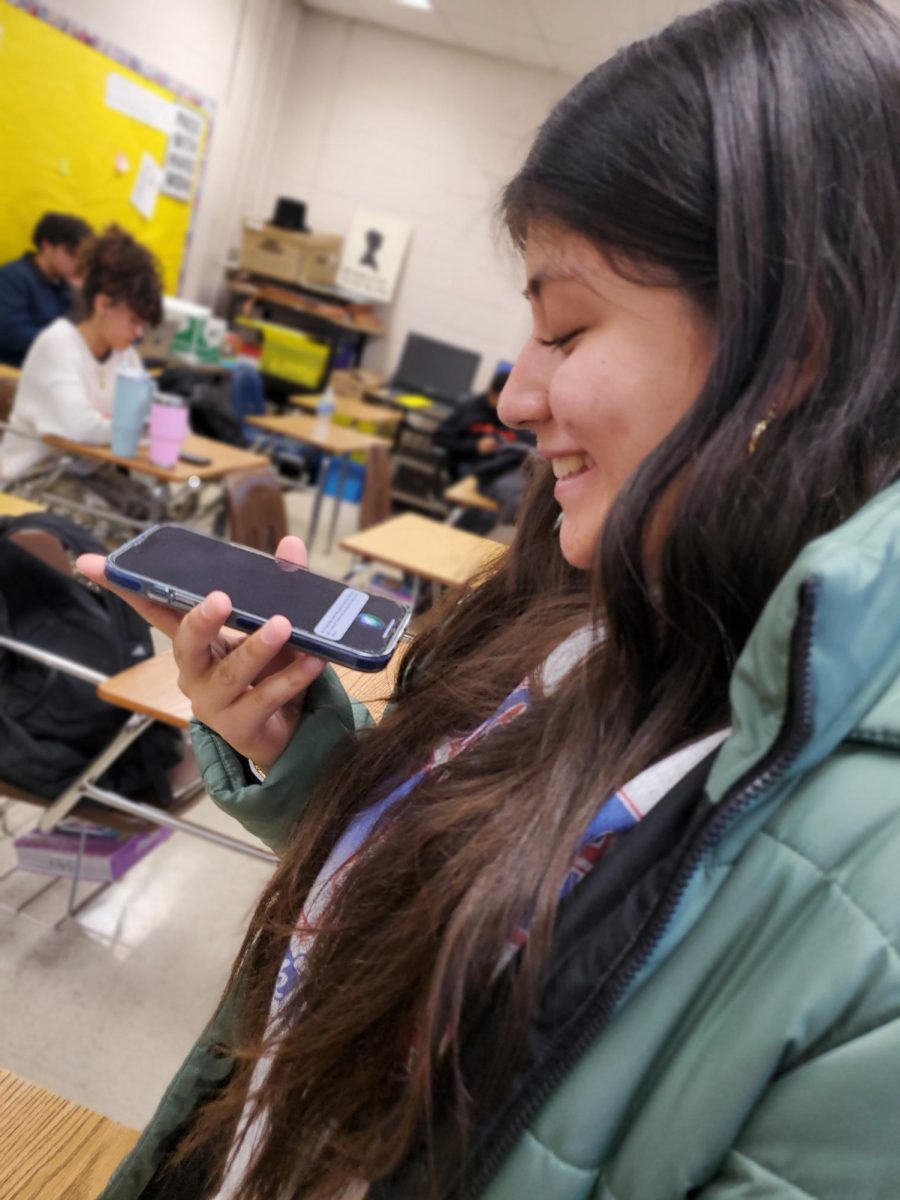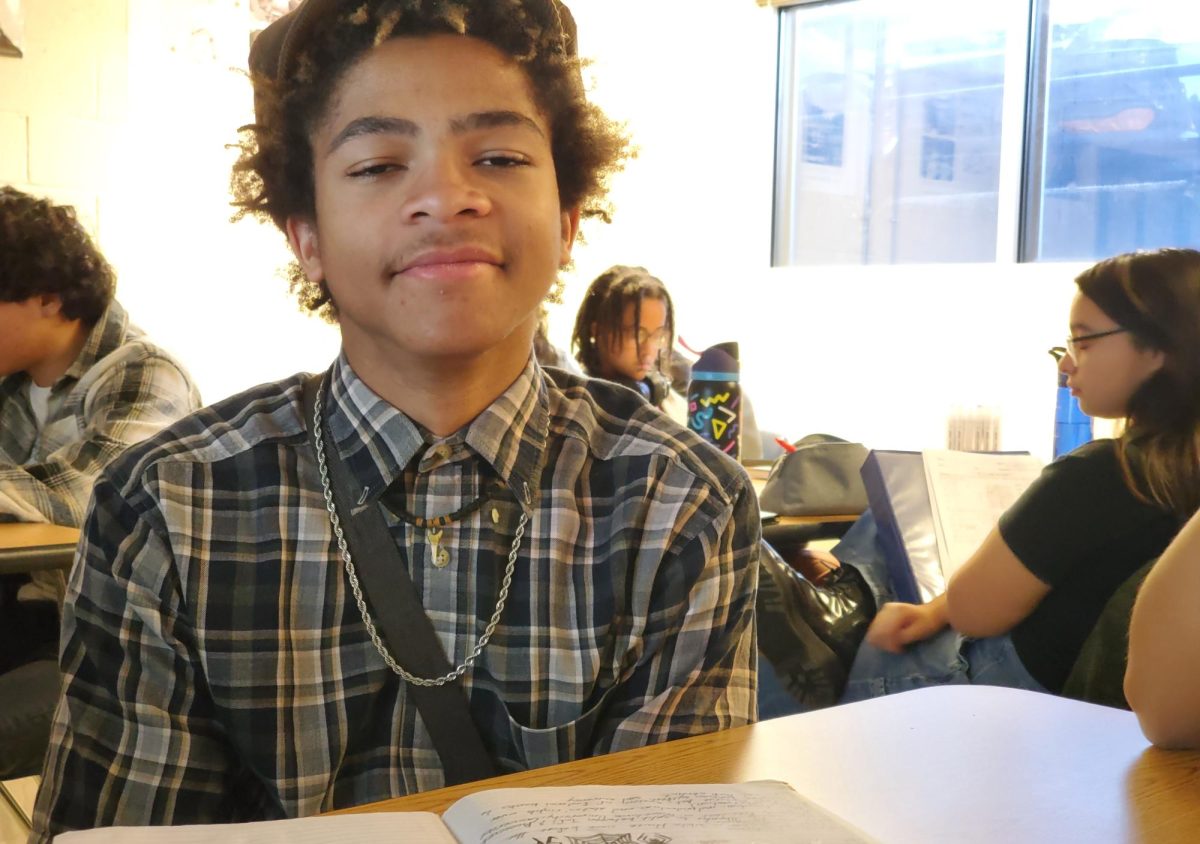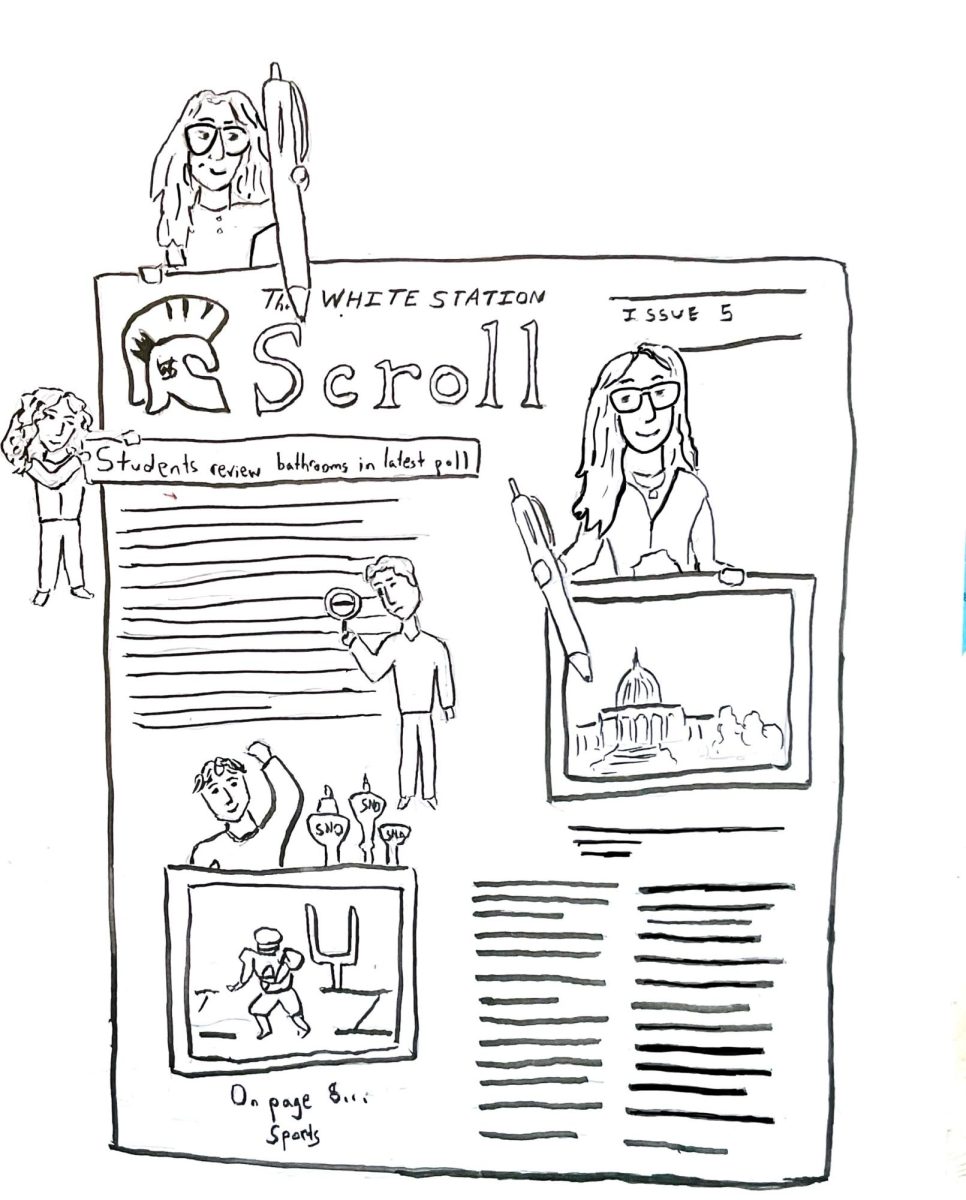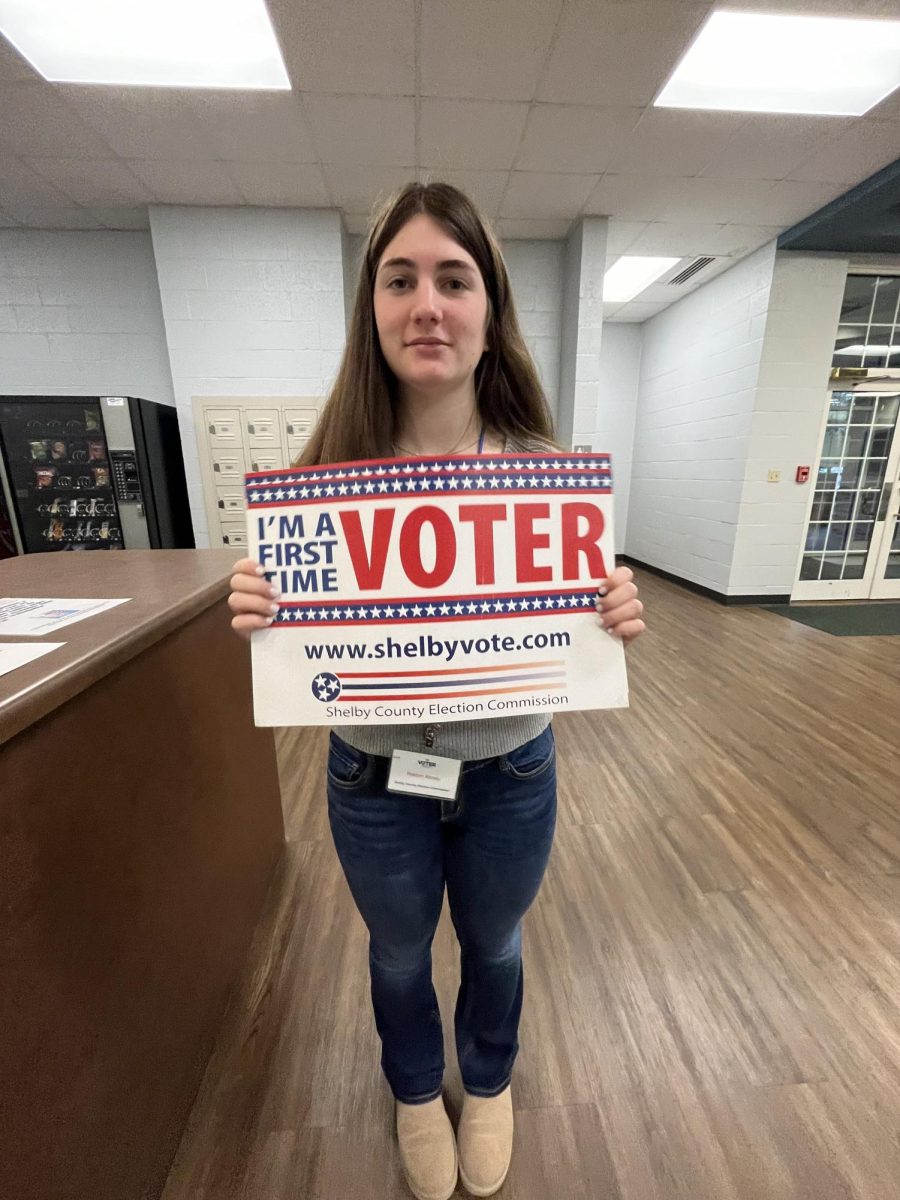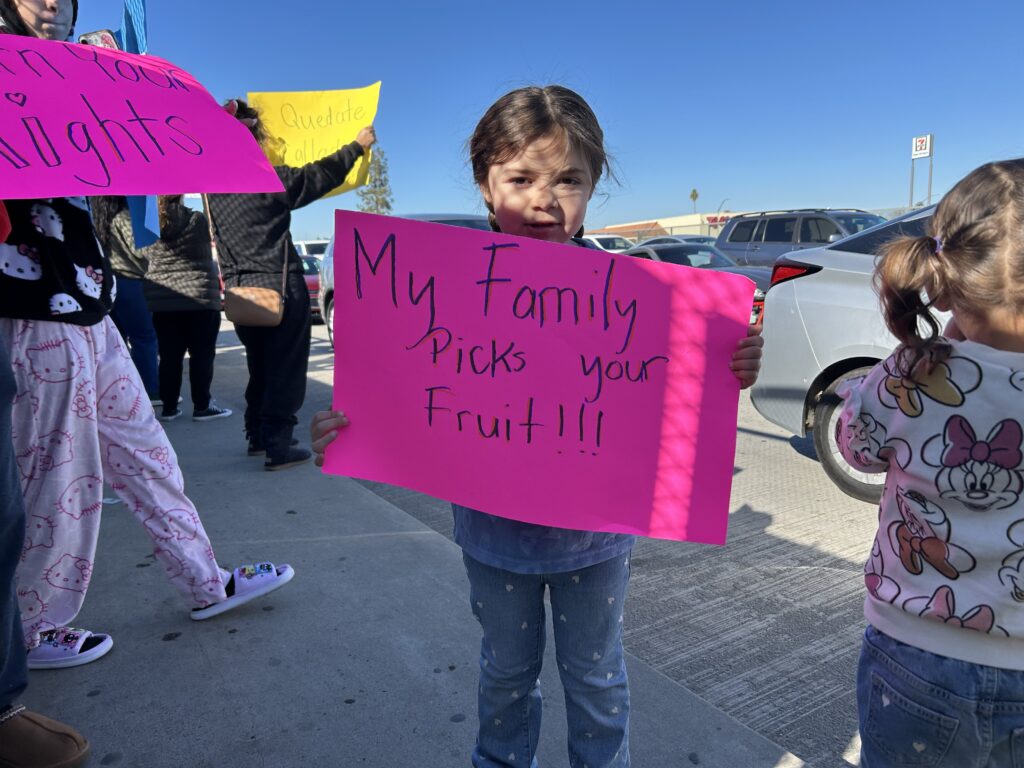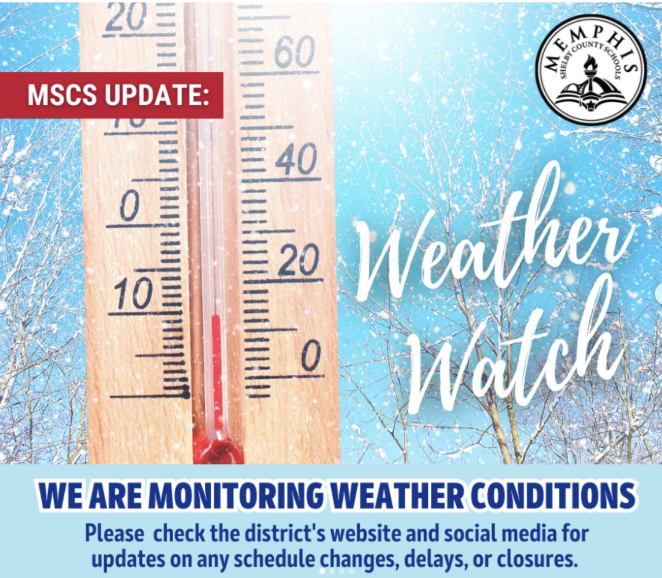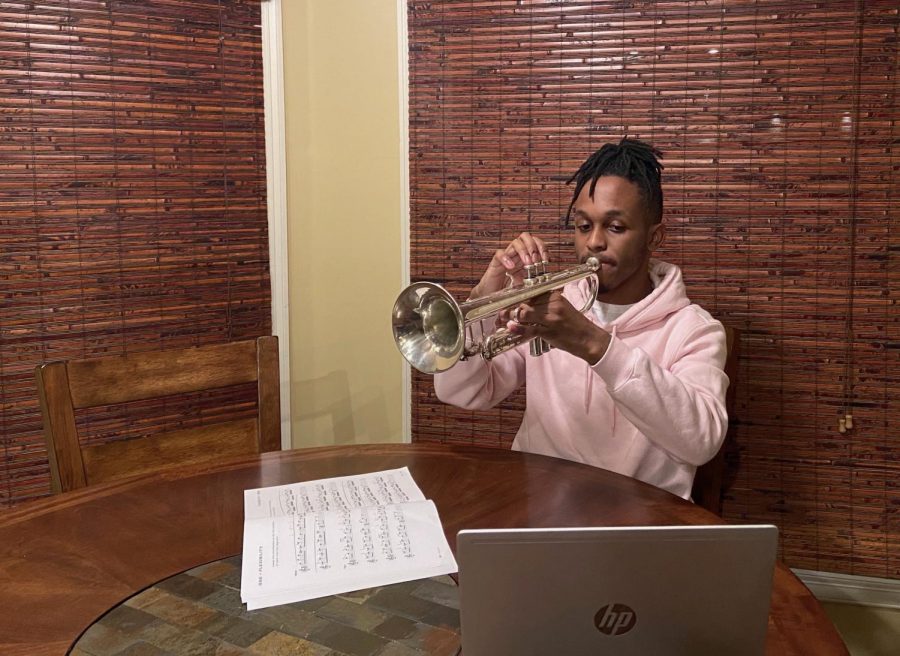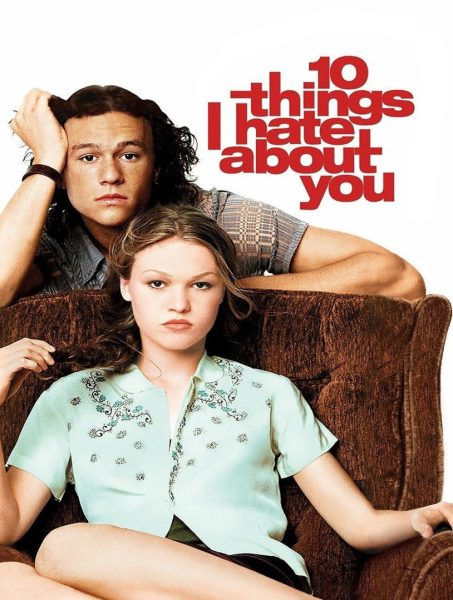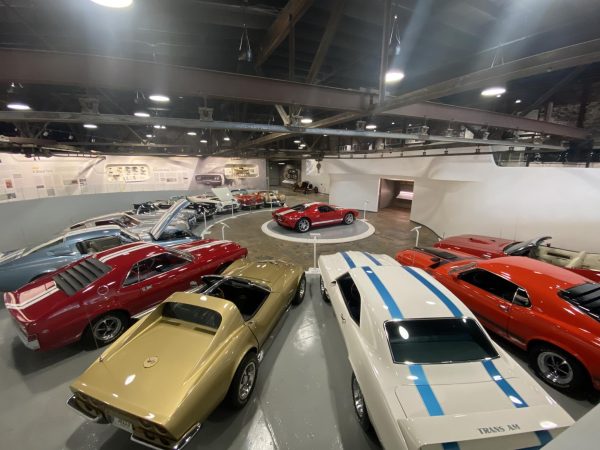Virtual school giving you treble? Music classes cope online
Adam Brooks (12) plays his trumpet, sheet music and laptop at hand. Restrictive virtual policies and snarky trumpet jokes alike haven’t stopped students from making music.
How many trumpet players does it take to change a lightbulb? Five. One to handle the bulb and four to tell him how much better they could have done it. See anything wrong with this joke? No, it’s not the ruthless jab at a trumpet player’s ego (band kids can attest to this); it’s the fact that nowadays, five musicians can’t actually gather in one place due to the ongoing pandemic.
Music-making in 2020 has never looked more different. Choirs, bands and orchestras all over the world have had to find innovative and often inconvenient ways to create music remotely. So how are the music departments at school adapting to a virtual setting?
To mute or not to mute?
Confined to the cold comfort of one’s home, playing live with other musicians is impossible, but that doesn’t stop students from making music altogether. Students in choir, band and orchestra all have opportunities to sing or play during class, whether they’re warming up while muted or performing individually for the entire class to listen.
“For most choirs, warm-ups take place live with us directing and students singing along with their mics muted. From time to time, I like to let individual students show off their abilities and come off mute,” choir director Daniel Massey said.
Band and orchestra follow a similar process for warmups, and sometimes, others in the class will provide feedback on a student’s playing.
“We warm up by tuning, and we do everything on mute. Then [Dr. Palmer] usually volunteers one of us to play what we’ve been working on, and we critique each other,” violist Abby Cassius (11) said.
Whatever the case, students can still make music, just not at the same time. The lag created through video chat makes it virtually impossible to sync up tempos or play in unison. For now, practicing on mute or going solo are a student’s only options, but that doesn’t mean ensemble music is completely out of the question.
Putting it together
For group or ensemble pieces, the music classes will use editing softwares to stitch together individual recordings. Rehearsal for these pieces mostly takes place independently.
“We upload a PDF of each piece and create and record learning tracks for all parts of the choir. These tracks have a metronome in the background for them to consistently practice and record their own voices to submit to us,” Massey said.
Eventually, these recordings will be edited together to emulate a full performance.
“We will be using digital audio workstations to compile and edit singers’ submissions of their choral part. This way, we can edit them to make everything sound more together,” choir director Joseph Powell said.
Choir, band and orchestra all have plans to create virtual ensembles, though the process will vary slightly for each class. These recordings can be showcased during future performances or simply held as a keepsake for students.
The individual vs. the ensemble
Although students are missing out on playing together with the group, submitting recordings where teachers can provide personalized feedback gives students the chance to improve at a fundamental level.
“We use Seesaw, which is a free website you can directly record music into. That allows them to submit music to me, and I can give feedback like a private lesson,” band director Brian Sims said.
In Orchestra, there’s also time during class for the whole group to learn about technique and other basics.
“We watch a professional violinist talk about her different techniques she learned growing up, and we have assignments on it… he’s focusing on our individual skills and getting better,” Cassius said.
There has been a greater emphasis on other musical topics as well, such as music theory and music history. Even so, with the conventional, full-group rehearsal gone, students are missing out on the essence of a performing arts class.
“We’ve lost that sense of kinship in a room when everyone is working on a piece. Someone may not know how it goes but then they hear the person next to them, and they kind of feed off each other, help each other, and just have that collaborative work ethic,” Sims said.
Ultimately, while virtual school can provide new learning opportunities and even challenge students for the better, music classes are meant to be ensembles — they thrive on the togetherness of people.
“I miss interacting with the band as a whole, seeing my friends and maintaining that family aspect that the band has… being able to see each other in person just makes the experience a lot more fun and unique,” percussionist Kyndle Lee (12) said.
Your donation will support the student journalists of White Station High School. Your contribution will allow us to purchase equipment and cover our annual website hosting costs.



